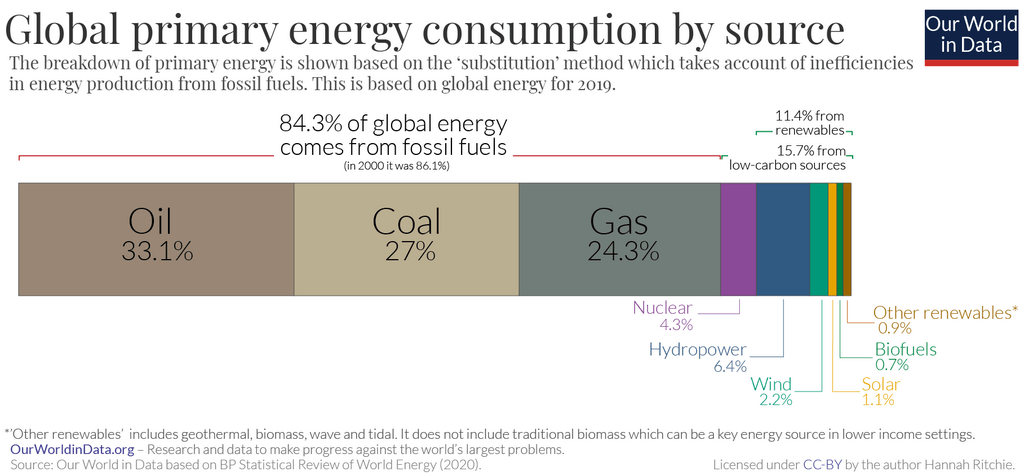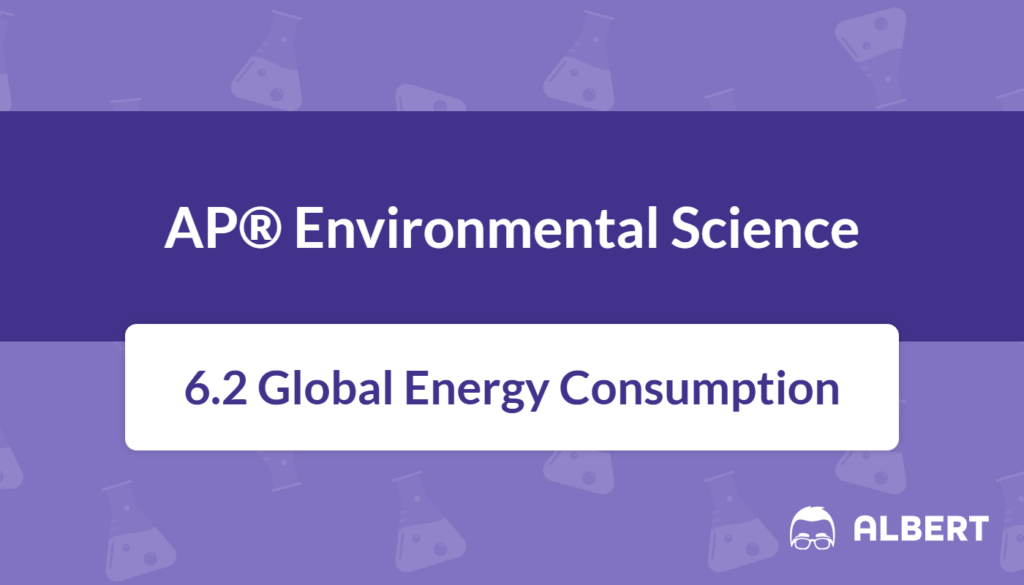What We Review
Introduction
Global energy consumption refers to the total energy used by societies around the world in a given time frame. It takes into account all the energy demanded for heating, transportation, electricity production, and industrial processes. Understanding the global energy consumption source is essential because the types of energy sources we use can influence environmental quality, economic growth, and technological development. Moreover, energy usage patterns significantly influence the carbon cycle, directly affecting climate change and air quality. Consequently, analyzing the types of energy sources in use and their respective impacts helps determine effective paths toward sustainable development.
Energy plays a critical role in modern life, but its production and consumption can have severe environmental consequences. Therefore, analyzing the trends behind global energy consumption enables informed policy decisions. Ultimately, these decisions can promote a balanced approach that meets growing energy demands while mitigating adverse environmental impacts.
Overview of Global Energy Consumption
Definition and Significance
Global energy consumption measures how much energy societies around the world use for their daily needs. This metric is often expressed in units such as joules, BTUs, or kilowatt-hours (kWh). It is significant because energy is one of the fundamental drivers of economic activity. In addition, energy access influences living standards and public health. When more energy is available, countries can power manufacturing facilities, run efficient public transportation, and improve communication systems.
However, the way this energy is sourced and consumed impacts ecological systems. For instance, fossil fuel combustion releases greenhouse gases that contribute to climate change. Meanwhile, alternative forms of energy, such as solar, wind, and hydro, can offer cleaner options. Therefore, finding a balance between meeting energy demands and preserving environmental integrity is critical.
Energy Consumption Trends
Overall, global energy consumption has risen steadily over the past century due to population growth, industrial expansion, and rising living standards. Energy usage is not evenly distributed between developed and developing countries. Developed nations often have established infrastructures that rely on large amounts of energy. In contrast, developing nations typically have lower per capita energy consumption, which frequently increases as they industrialize.
Many experts project that total global energy demand will keep rising in the coming decades. Therefore, long-term sustainability depends on transitioning to cleaner and more efficient energy technologies. Simultaneously, governments worldwide are recognizing the importance of regulating energy production and consumption to secure resources for future generations.
Major Sources of Global Energy
Fossil Fuels
Fossil fuels remain the most widely used energy sources globally. These include coal, oil, and natural gas, formed over millions of years from the remains of ancient organisms. They supply the lion’s share of global energy, accounting for about 80% of consumption in many regions.
Fossil fuels are prized for their high energy density and relative affordability. However, their combustion produces carbon dioxide and other pollutants that negatively affect air quality and the carbon cycle. Governments, therefore, face the challenge of reducing dependence on these fuels while still meeting energy demands.

Example: Step-by-step calculation of the percentage of energy supplied by fossil fuels
- Let E_{\text{total}} represent the total global energy consumption in a given year.
- Suppose E_{\text{fossil}} is the total amount of energy derived from all fossil fuels for that same year.
- The fraction of energy from fossil fuels is \frac{E_{\text{fossil}}}{E_{\text{total}}}.
- To convert this fraction into a percentage, multiply it by 100: \left(\frac{E_{\text{fossil}}}{E_{\text{total}}}\right) \times 100.
If E_{\text{fossil}} is 400 exajoules (EJ) and E_{\text{total}} is 500 EJ, then the percentage of energy from fossil fuels would be: \left(\frac{400}{500}\right) \times 100 = 80%.
Renewable Energy Sources
Renewable energy includes sources that are naturally replenished, such as solar, wind, hydroelectric, and geothermal energy. Each of these relies on virtually inexhaustible natural processes, unlike fossil fuels, which are finite. Moreover, these sources typically release fewer greenhouse gases, offering a more sustainable path.
Solar energy stands out for its widespread applicability. Wind energy is particularly useful in regions with strong prevailing winds, and hydroelectric power proves reliable where large rivers or dams exist. Geothermal energy, though less common, can be harnessed in volcanic regions. Nevertheless, these methods require substantial infrastructural investments, and their adoption rates vary between developed and developing countries.
Example: Exploring the rise of solar energy in a developing country
- A developing country implements a national plan to install solar panels in urban and rural areas.
- Initially, the installed solar capacity is S_1. After one year of policy incentives, solar capacity increases to S_2.
- The percentage increase can be calculated as: \frac{S_2 - S_1}{S_1} \times 100.
- If S_1 is 200 megawatts (MW) and S_2 is 260 MW, then the country’s solar capacity has grown by 30%.
Nuclear Energy
Nuclear energy harnesses the power of atomic reactions—either fission or fusion—to generate heat, which then produces electricity. A key advantage is that nuclear reactors do not emit carbon dioxide during operation, helping to reduce dependence on fossil fuels. However, nuclear plants require rigorous safety measures to manage radioactive waste and prevent accidents.
In some regions, nuclear power offers a relatively stable, low-carbon energy source. Nevertheless, it remains a controversial option due to high construction costs and potential safety issues. Governmental regulation plays a key role in determining whether nuclear power is expanded or restricted within a country.
Energy Consumption in Developed vs. Developing Countries
Energy Consumption Patterns
Developed countries tend to consume more energy per capita, largely because of advanced manufacturing processes, extensive transportation networks, and widespread access to electronic devices. Meanwhile, developing countries typically have lower per capita energy consumption but higher overall growth rates in energy use. According to ENG-3.B.1, as developing countries grow economically and industrialize, their reliance on fossil fuels tends to increase.
These patterns influence the environment in different ways. High-income nations can invest in energy-efficient technologies and enforce environmental standards. By contrast, lower-income nations may prioritize economic growth and industrialization, leading to the construction of fossil fuel-dependent infrastructure.
The Impact of Economic Development
Economic development goes hand in hand with rising energy demand. New factories, transportation networks, and communication systems all require substantial energy inputs. In many cases, fossil fuels remain the first choice because they are comparatively cheaper, more established, and easier to deploy quickly.
Example: A developing country experiencing industrial growth
- Suppose a developing country’s industrial sector grows at 6% annually.
- Consequently, more factories and power plants are built, often fueled by coal or natural gas.
- As a result, total energy use increases from E_{\text{initial}} to E_{\text{final}}.
- If E_{\text{initial}} is 100 EJ and industrial demand rises by 6 EJ each year, then after five years, total usage increases to approximately 130 EJ.
This example illustrates how increased reliance on fossil fuels accompanies rapid industrialization, aligning with ENG-3.B.3.
Factors Influencing Energy Consumption
Availability and Accessibility
Local resource availability strongly impacts energy choices. Regions rich in coal reserves often build coal-fired power plants, while windy coastlines might emphasize wind farms. Furthermore, easy access to energy grids ensures that populations can utilize a particular energy type. In remote areas, renewable sources like solar and wind might offer a more practical solution than extending power lines from a distant grid.
Price Factors
Energy prices significantly affect consumption patterns. When fossil fuels are affordable, people and industries tend to use them more intensively. However, if governments introduce incentives or subsidies for renewables, their costs can become competitive. Consequently, the market’s response to price signals often drives decision-making about which energy source to adopt.
Governmental Regulations
Governmental regulation is another key factor highlighted in ENG-3.B.5. Regulations may include carbon taxes, emission standards, and incentives for energy-efficient appliances. Consequently, policies can either accelerate or slow the adoption of renewable energy sources. In addition, strict regulations can reduce harmful emissions and encourage innovation in green technology.
Example: A country that successfully implemented renewable energy regulations
- A national government sets a policy requiring 20% of electricity production to come from renewable sources within five years.
- Businesses receive tax credits for installing solar panels or wind turbines.
- Consequently, renewable capacity expands significantly.
- After five years, the target is met, illustrating how coordinated government intervention can reshape a nation’s energy landscape.
The Future of Global Energy Consumption
Trends Towards Sustainability
Many nations are turning toward sustainability by promoting renewable energy, improving energy efficiency, and cutting back on harmful emissions. Technological advancements, such as better energy storage systems, further encourage widespread renewable adoption. Consequently, new investments in solar and wind farms continue to grow, especially in developing countries aiming to leapfrog fossil fuel‑heavy infrastructures.
Additionally, innovations in smart grids and battery technology are making energy systems more resilient. In some regions, electric vehicles are becoming mainstream, and research into hydrogen fuel cells is expanding. Together, these trends can help reduce greenhouse gas emissions and ensure long-term energy security on a global scale.
Challenges Ahead
Nevertheless, many challenges remain. Climate change, fueled by emissions from fossil fuel use, continues to threaten ecosystems. Furthermore, resource depletion raises concerns about the long-term viability of certain fossil fuels. Another pressing factor is population growth, which raises total energy demand. According to the population growth model, higher population densities contribute to greater pressure on energy resources, intensifying the search for sustainable options.
Additionally, differences in government policies can slow progress, since some countries prioritize short-term economic gains over long-term sustainability. Therefore, balancing energy demands with conservation efforts remains an ongoing concern, especially in regions seeking industrial development. Despite these challenges, a coordinated global effort can expedite the transition toward cleaner energy sources.
Conclusion
Global energy consumption continues to rise as nations develop economically and technologically. Although fossil fuels remain the dominant energy source, renewable energy technologies are gaining momentum due to environmental concerns and government interventions. In developed countries, high per capita energy use encourages investments in efficiency measures, while developing countries often prioritize rapid industrial growth that depends heavily on fossil fuels.
Nevertheless, a global shift toward more sustainable energy is under way. Availability, price, and governmental regulation significantly shape how societies choose and use energy resources. By carefully considering these factors, it becomes possible to meet growing energy demands while minimizing ecological damage. Ensuring access to clean energy not only addresses immediate economic needs but also protects future generations and ecosystems worldwide.
Important Vocabulary
- Global Energy Consumption: The total amount of energy used by countries worldwide, measured in units such as joules or kilowatt-hours.
- Fossil Fuels: Naturally occurring energy sources formed from ancient organic matter (e.g., coal, oil, natural gas) that release greenhouse gases when burned.
- Renewable Energy: Energy sources replenished by natural processes, such as solar, wind, hydro, or geothermal power, that produce fewer emissions.
- Developed Countries: Nations with high industrialization, advanced infrastructure, and higher per capita income levels.
- Developing Countries: Nations with emerging economies, lower income levels, and often rapidly increasing energy consumption.
- Governmental Regulation: Policies or laws set by authorities to guide energy use, encourage sustainability, and reduce environmental impacts.
Sharpen Your Skills for AP® Environmental Science
Are you preparing for the AP® Environmental Science test? We’ve got you covered! Try our review articles designed to help you confidently tackle real-world AP® Environmental Science problems. You’ll find everything you need to succeed, from quick tips to detailed strategies. Start exploring now!
Need help preparing for your AP® Environmental Science exam?
Albert has hundreds of AP® Environmental Science practice questions, free response, and full-length practice tests to try out.








